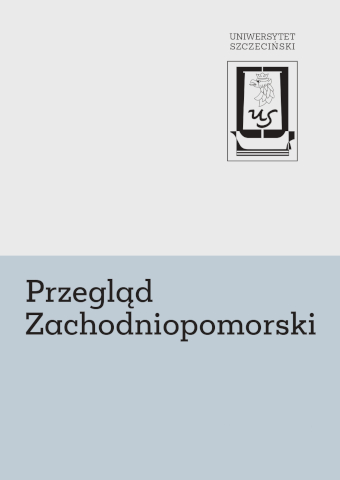| 1. | Augustyn ze Stargardu zwany niegdyś Angelusem, Protokół. Kamieńska Kronika-Rodowód Książąt Pomorskich, tzw. Stargardzka Genealogia, wyd. E. Rymar, tłum. E. Buszewicz, Stargard 2008, s. 35–95. |
| 2. | Die Prüfeninger Vita Bischof Ottos I. von Bamberg nach der Fassung des Groβen Österreichischen Legendars, w: Monumenta Germaniae Historica. Scriptores rerum Germanicarum in usum scholarum separatim editi, wyd. J. Petersohn, Hannover 1999. |
| 3. | Ebonis Vita S. Ottonis Episcopi Babenbergensis, w: Monumenta Poloniae Historica, Series Nova, t. 7, cz. 2, oprac. K. Liman, J. Wikarjak, Warszawa 1969. |
| 4. | Helmoldi presbyteri bozoviensis Cronica Slavorum, w: Monumenta Germaniae Historica. Scriptores rerum Germanicarum in usum scholarum, wyd. B. Schmeidler, Hannoverae 1937. |
| 5. | Notula satis notabilis de Pomeranorum, Stetinensium, ac Rugie principatu. Eine Pommersche Streitschrift des vierzehnten Jahrhunderts. Aus einer Handschrift Palthens mitgetheilt von J.G.L. Kosegarten, „Baltische Studien”, Jg. 17, H. 1/2, 1858/1859, s. 103–140. |
| 6. | Pommersches Urkundenbuch, t. 1, red. R. Klempin, Stettin 1868. |
| 7. | Boroń P., Słowiańskie wiece plemienne, Katowice 1999. |
| 8. | Forstner D., Świat symboliki chrześcijańskiej, Warszawa 1990. |
| 9. | Historia Pomorza, red. G. Labuda, t. 1, cz. 2, Poznań 1972. |
| 10. | Liman K., Stan badań nad żywotami świętego Ottona z Bambergu, „Studia Źródłoznawcze” 1958, nr 3, s. 23–47. |
| 11. | Modzelewski K., Pogańskie sacrum w ustroju i topografii najstarszych miast słowiańskich, w: Świat średniowiecza. Studia ofiarowane profesorowi Henrykowi Samsonowiczowi, red. A. Bartoszewicz, G. Myśliwski, J. Pysiak, P. Żmudzki, Warszawa 2010, s. 144–162. |
| 12. | Morawiec J., Wolin w średniowiecznej tradycji skandynawskiej, Kraków 2010. |
| 13. | Petersohn J., Der südliche Ostseeraum im kirchlich-politischen Kräftespiel des Reichs, Polens und Dänemarks vom 10. bis 13. Jahrhundert. Mission – Kirchenorganisation – Kultpolitik, Böhlau 1979. |
| 14. | Piskorski J.M., Państwo pierwszych Gryfitów (do 1220 r.), w: Pomorze Zachodnie poprzez wieki, red. J.M. Piskorski, Szczecin 1999. |
| 15. | Pomian K., Przeszłość jako przedmiot wiary. Historia i filozofia w myśli średniowiecza, Warszawa 2009. |
| 16. | Rębkowski M., Chrystianizacja Pomorza Zachodniego. Studium archeologiczne, Szczecin 2007. |
| 17. | Rosik S., Bolesław Krzywousty, Wrocław 2013. |
| 18. | Rosik S., Conversio gentis Pomeranorum. Studium świadectwa o wydarzeniu (XII wiek), Wrocław 2010. |
| 19. | Rusakiewicz M., Wineta. Korzenie legendy i jej recepcja w historiografii zachodniopomorskiej do XVI wieku [w druku]. |
| 20. | Rymar E., Rodowód książąt pomorskich, t. 1, Szczecin 1995. |
| 21. | Strzelczyk J., Bolesław Krzywousty i Otton z Bambergu, w: Pomorze Zachodnie w tysiącleciu, red. P. Bartnik, K. Kozłowski, Szczecin 2000, s. 47–68. |
| 22. | Ślaski K., Słowianie Zachodni na Bałtyku w VII–XIII wieku, Gdańsk 1969. |
| 23. | Walczak R., „Protocollum” Augustianina-eremity zwanego Angelusem ze Stargardu. O polsko-pomorskich związkach historiograficznych w średniowieczu, Poznań 1991. |







